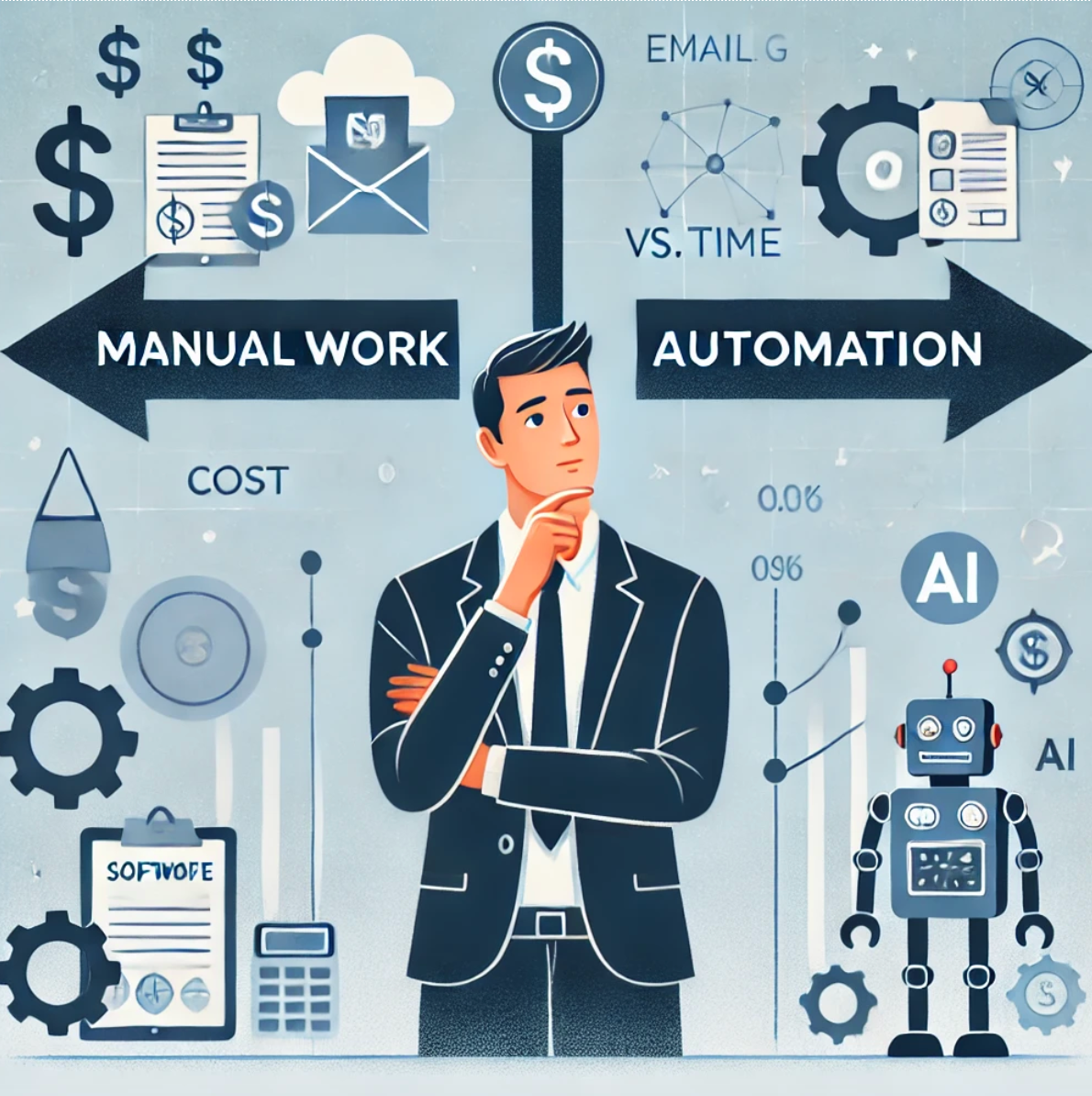Automation Hype vs. Reality: Get It Right
Automation is everywhere these days. From tech startups to small businesses, everyone seems obsessed with automating everything—emails, customer service, even coffee orders. And in theory, they’re right: you can automate almost anything. With enough time, money, and tools, a machine or software can take over any task. But here’s the catch: just because it’s possible doesn’t mean you should. Automation has a cost—sometimes a big one—and if you don’t understand your business’s scale or needs, it can end up costing way more than doing things by hand. We’ve seen this before with technological shifts. When the washing machine came out, it automated part of clothes washing, not the entire process. Computers didn’t do everything people thought they would, and AI today is the same—it usually handles a piece, not the whole job. It works best when humans are still involved. So, how do you figure out what’s right to automate? Let’s break it down.
The Automation Craze—and Its Hidden Costs
We’re in a movement where automation feels like the magic fix. Businesses hear stories of AI saving hours or chatbots handling 24/7 support, and they jump in. Take a small coffee shop owner who spends $500 on a fancy automated ordering AI. Sure, it’s cool—customers explain what they need, and orders zip to the kitchen. But if the shop only gets 20-30 orders a day and has one person working, it might free up some time, but that person still has to stay in the shop. That $500 (plus monthly fees) doesn’t make sense when a cheap POS software and a tablet would’ve worked fine. On a small scale, automation can be overkill—eating up cash and time instead of saving it.
Or picture a freelance designer automating their invoicing. They buy a $100/month tool to send bills, track payments, and nag clients. Sounds smart, right? But if they only invoice two clients a month, that’s $1,200 a year for something they could’ve done in 10 minutes with a free email template. The lesson? Automation’s cost—software, setup, maintenance—can outweigh the benefits if your volume or complexity doesn’t justify it.
What’s Worth Automating? The Core Stuff
So, what should you automate? Focus on the things already existing in your business—tasks that, if scaled up or polished, save time, boost quality, or cut costs. Or look at tasks you do a lot but can’t do more of because they’re time-consuming—stuff you know pays off. These are your core processes, the heartbeat of what you or someone in your business does. Automation works best when it builds on something proven, not when it’s a shiny experiment.
For example, say you run a BBQ maintenance service like Grillyan, fixing grills in Miami. If you’re manually finding property management companies and rental communities with their contacts, that’s hours lost. But you could scrape that data using Hexomatic and free up time to focus on reaching out to them instead of navigating websites and copy-pasting contacts. Why does this work? You could get 10 or 100 times more contacts. Sure, someone might say, “We still have limited resources to call them,” but having more contacts to filter for the best fits or higher conversions improves your process. Automation isn’t just about cutting costs—it’s about boosting efficiency without breaking the bank. Data backs this: businesses automating data collection to filter from bigger samples see better results when the process already works.
How to Know What’s Right for You
Here’s the trick: match automation to your size and goals. Ask yourself:
Is this task repetitive and time-heavy? If you’re doing it multiple times a day, it’s worth a look.
Does it scale with growth? Automating customer support makes sense if you’re adding 1000 clients monthly, not 15.
Will it improve quality or cut costs enough? A $100 tool saving $500 in labor—or bringing more sales with the same effort—is a win. A $1,000 tool saving $1,100 or saving time for someone who’ll just watch more TikTok, isn’t.
The Bottom Line
Automation is a tool, not a cure-all, and it’s usually about handling the boring part, not the whole process. You can automate everything, but you shouldn’t. Start with what’s already working—your core tasks—and use automation to make them faster, better, or cheaper. Ignore the hype of automating every little thing; if the cost outweighs the gain, stick to manual for now. Scale matters, and so does common sense. Pick the right spots, and automation will grow your business—not drain it.
A Personal Note from Me
If you’re just starting a new business, stop thinking about automation. Sorry for being so straightforward, but start manually, polish the process, then start even thinking about automation. Of course, this doesn’t apply to serial entrepreneurs who know exactly what to do. If you’re running a business and happy to share your process for advice from me on what you can automate using our tools, please book me for a video call. I’ll be there to help you—click here to book.


